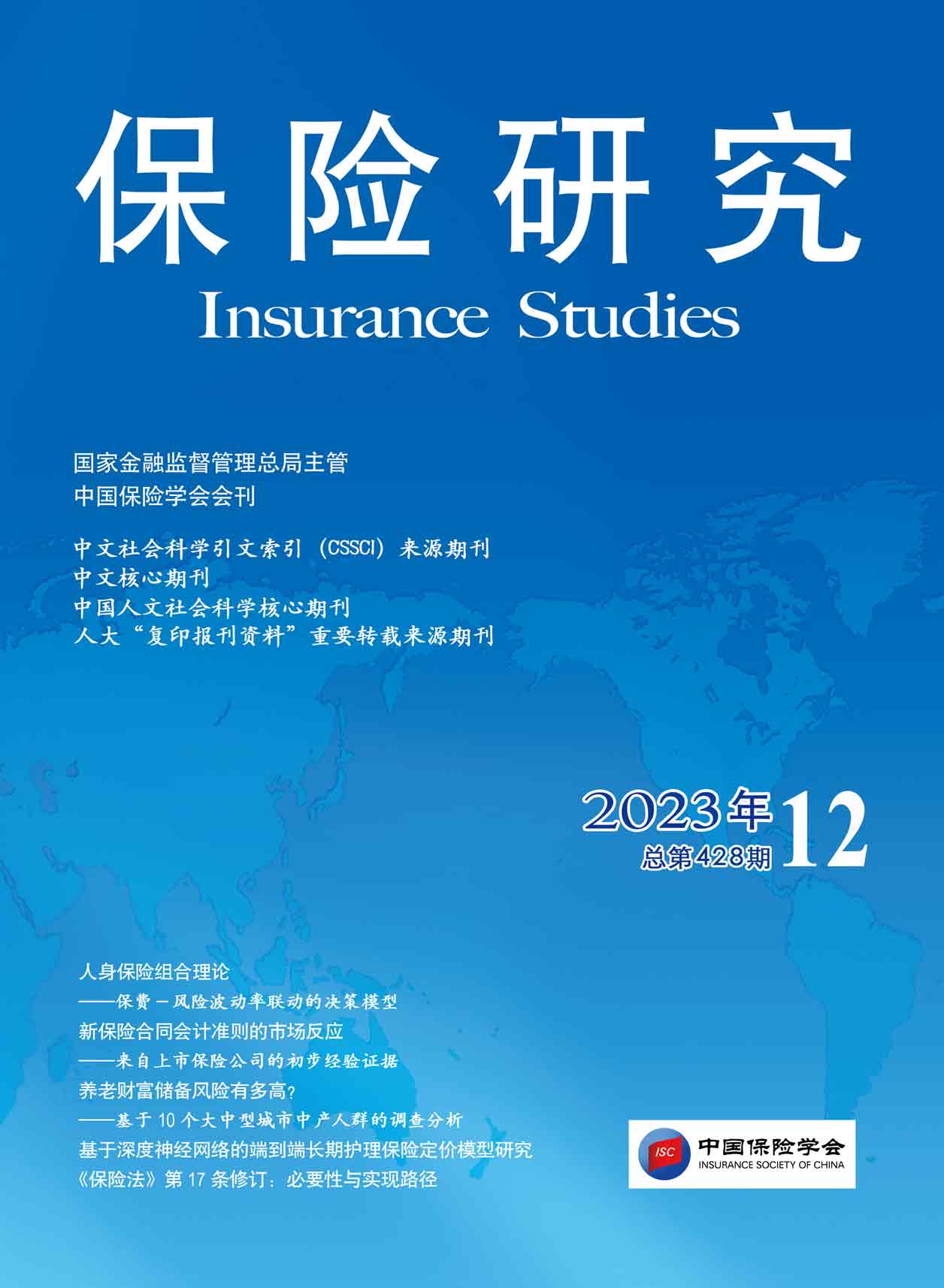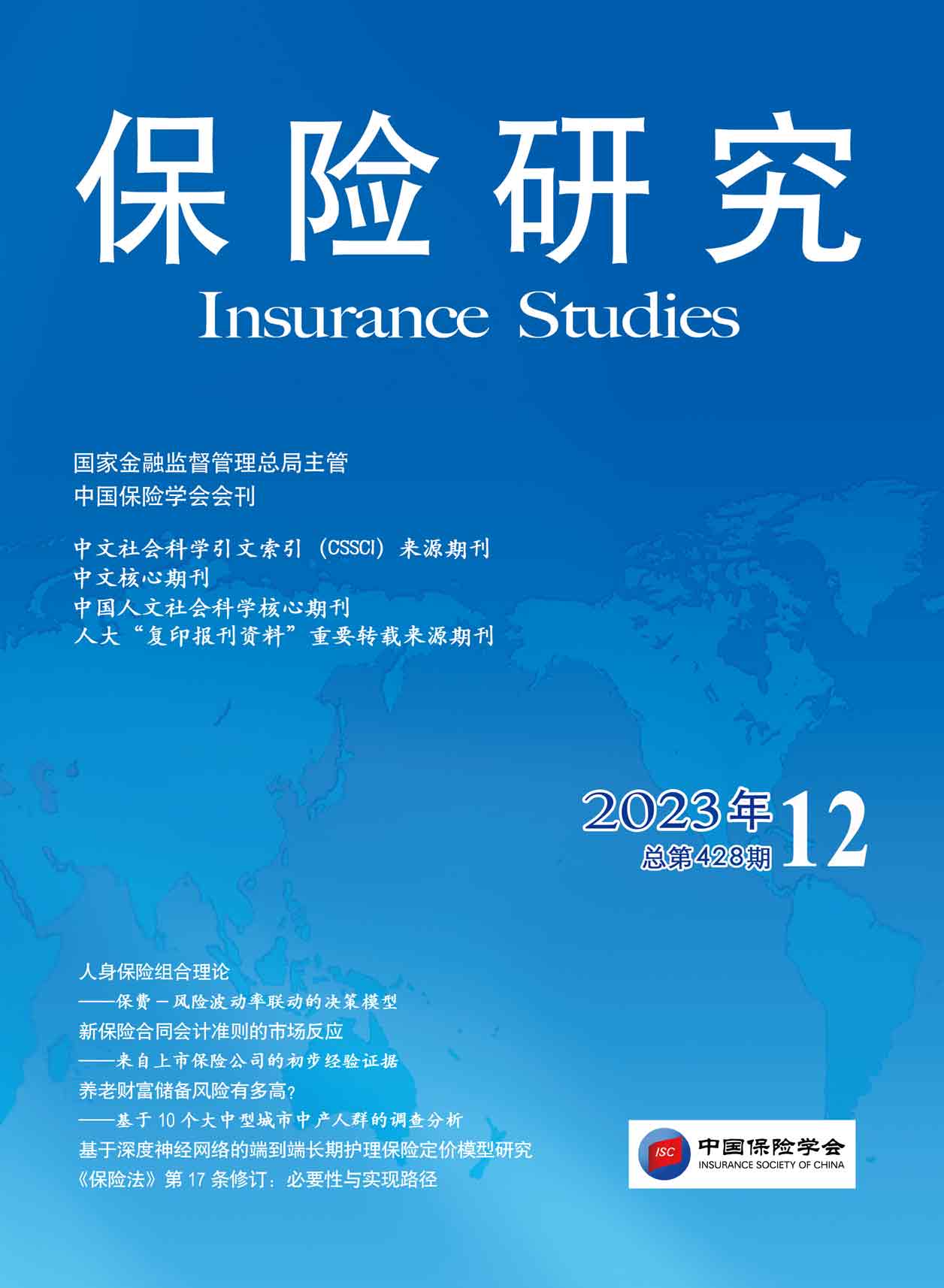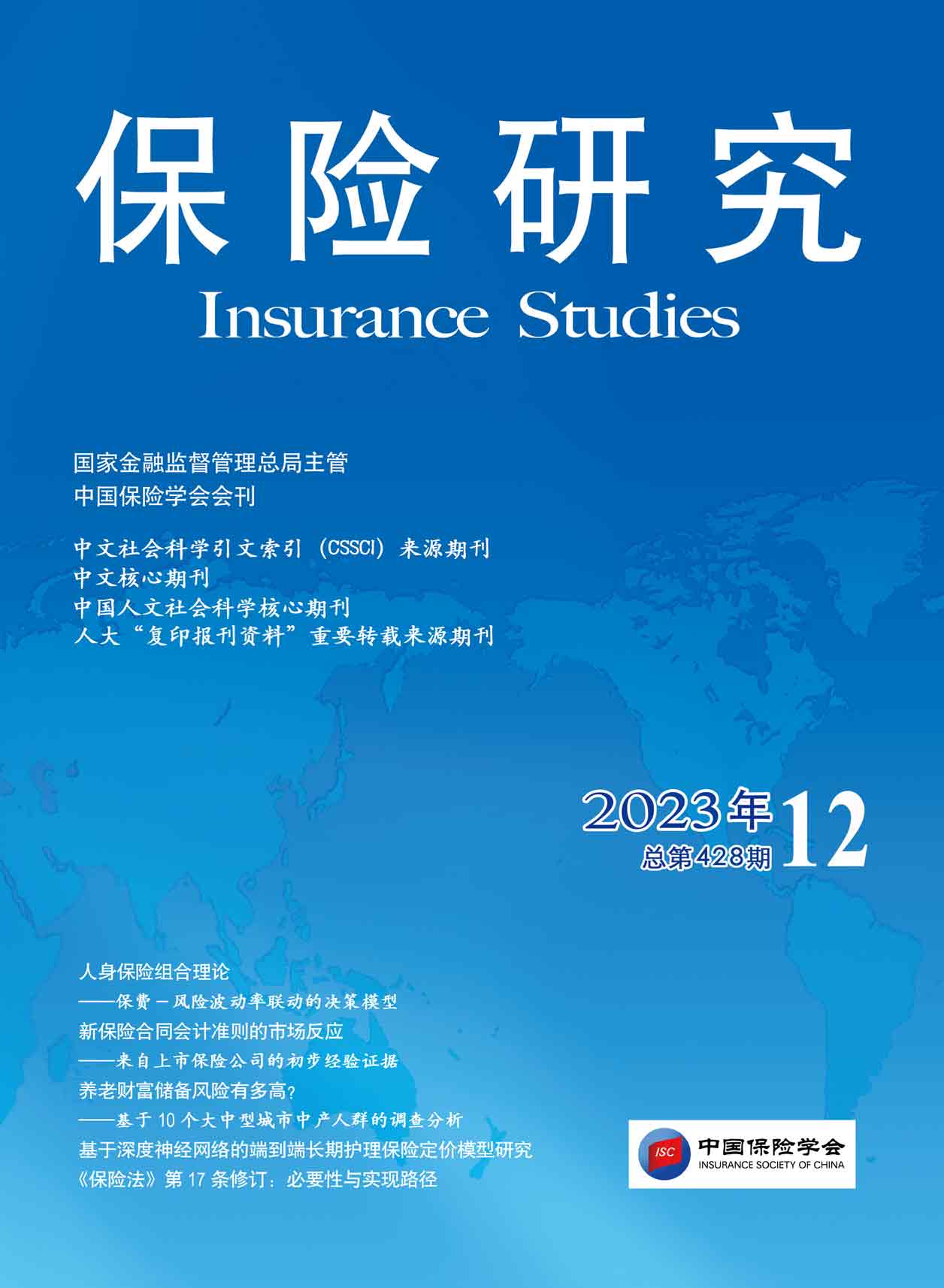
《保险研究》20231201-《人身保险组合理论——保费-风险波动率联动的决策模型》(张程、范雨文、曹铸、王洪彬)
[中图分类号]F222;F840 [文献标识码]A [文章编号]1004-3306(2023)12-0003-11 DOI:10.13497/j.cnki.is.2023.12.001
资源价格:30积分
- 内容介绍
[摘 要]保险产品具有种类繁多、条款抽象难懂、责任非标准化等特点,消费者在购买保险产品时面临诸多痛点。蚂蚁保省心配应用人身保险组合的量化配置方法,为研究人身保险配置问题提供了一个基础的思路框架,为消费者购买产品提供参考。通过构建风险波动率指标,并基于长期精算原理和现代资产组合理论的均值-方差理论,搭建了保费-风险波动率联动的长期决策模型,提供了针对医疗、重疾、意外、身故四类人身风险的配置方案建议,即消费者可在有效前沿上根据自身预算选择风险保障覆盖最优的配置方案。研究结果显示:以35岁、月收入1.25万、资产20万的男性消费者群体为例,在保费支出最接近的情况下,模型推荐的保险组合比消费者自身实际配置的组合平均可降低38.47%的风险波动率,在其他年龄点也有相似结论。
[关键词]人身风险;保险配置;风险波动率;双目标优化
[作者简介]张程,蚂蚁集团保险事业群,蚂蚁保省心配金融策略总负责人;范雨文,蚂蚁集团保险事业群,蚂蚁保省心配金融策略负责人;曹铸,蚂蚁集团保险科技算法团队,蚂蚁保省心配算法负责人;王洪彬,蚂蚁集团保险科技算法团队,蚂蚁保省心配算法总负责人.
Life Insurance Portfolio Theory—Decision-making Model of Premium-Risk Volatility
ZHANG Cheng,FAN Yu-wen,CAO Zhu,WANG Hong-bin
Abstract:Due to the large variety of insurance products,abstract and difficult-to-understand terms,and non-standardized liabilities,consumers face many difficulties when purchasing insurance products.The Ant Insurance’s hassle-free application for insurance portfolio recommendation offers a vein of thought for the research on insurance product allocation,and provides some reference for consumers on purchase decisions.This article constructs a risk volatility index,and based on long-term actuarial principles and the mean-variance model of Modern Portfolio Theory (MPT),builds a long-term decision-making model of premium-risk volatility,offering suggestions on the coverage of the four types of personal risks such as medical care,critical illness,accident and death.Consumers can choose their optimal portfolio on the efficient frontier based on their own budget and their own risk preferences.Taking a 35-year-old male consumer with a monthly income of RMB 12,500 and assets of RMB 200,000 as an example,when the premium is close,the risk volatility of the model-suggested portfolio can be reduced by 38.47% than the portfolio formed by the consumer on his own on average;and similar conclusions are reached at other age points.
Key words:personal risk;insurance portfolio selection;risk volatility;dual-objective optimization

《保险研究》20231201-《人身保险组合理论——保费-风险波动率联动的决策模型》(张程、范雨文、曹铸、王洪彬)

《保险研究》20231202-《新保险合同会计准则的市场反应——来自上市保险公司的初步经验证据》(彭雪梅、段伊雪、王佳)

《保险研究》20231203-《套期保值效果与“保险+期货”赔付合理性——基于玉米和大豆试点项目的实证分析》(鞠荣华、顾巧静)

《保险研究》20231204-《养老财富储备风险有多高?——基于10个大中型城市中产人群的调查分析》(冯扬、房连泉)

《保险研究》20231205-《社保基金持股对企业ESG改善的实证分析》(杜秋萱、姜岩、侯德帅)

《保险研究》20231206-《基于深度神经网络的端到端长期护理保险定价模型研究》(仇春涓、刘守贤、 张楠)
